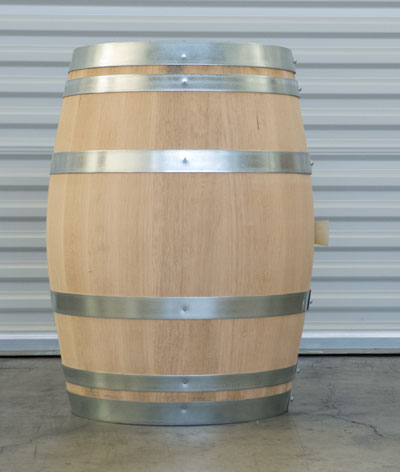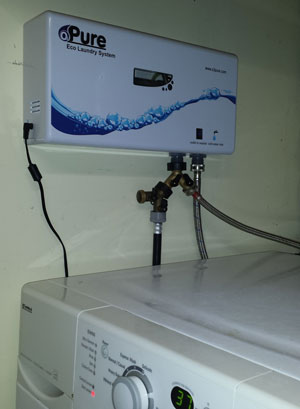
Q
I am following the recipe for tomato wine from the August-September 2002 issue. The recipe says to loosely cover the must in the primary fermenter with a plastic sheet. But after about seven days, I noticed what I call “gnats” buzzing in and around the must. Will I have to throw this batch away? And what should I do to keep this from happening again?
Ricky Lanier
via email
A
My condolences on experiencing your first visitation by the ever present, but never welcome, Drosophila melanogaster — more commonly known as the common fruit fly. These prolific and pesky little airborne bugs are the bane of not only the home winemaker, but of anyone who has left a peach to rot in the kitchen fruit bowl, whose daughter forgot to take out the recycling or whose compost pile has gotten a little out of hand.
Fruit files are attracted to the aromas of fruits and vegetables, especially those that are rotting or fermenting. Their small size means that they might slip your notice for a day or two . . . until, as you found, your home winery has suddenly become the Drosophila Dating Game. Your primary fermenter is where they all go to raise their fruit fly families and live happily every after for their short, but annoying, lives.
What can the conscientious winemaker do? I suggest you first try to stop them from entering your home winery. Install tight screening on windows and doors and make every attempt to keep doors closed as often as possible. You can also remove other sources of fruit fly attraction from your home winery environment. Keep garbage, recycling and compost well away from your cellar. Pick up and remove any windfall fruit from nearby trees or vines.
In addition to large barrier tactics, you can use more “fruit-fly excluding” materials to seal off your fermentations. I use cheesecloth or simple fine-weave fabric. Muslin works well — simply attach small squares of it with rubber bands around openings of jugs and carboys. For large trashcan-sized fermenters, secure a larger piece of cloth with bungee cords or some other elastic. When a cloth cover gets soiled or damp, replace with a clean one and launder the other.
A plastic tarp might also work, but it must be tightly bungeed or tied to the rim of the fermenter. I’ve had problems with plastic or tarps; the flies can worm their way under the ridges and wrinkles around the edge. Muslin works well because it’s easier to cinch up tightly against the fermenter edge. The carbon dioxide (CO2) is heavier than air, so enough of it will stay on top of the must and protect it during active fermentation. When the fermentation is no longer producing carbon dioxide, it’s a good idea to switch to a “hard top” to keep stray air currents from disturbing the CO2 layer. Commercial wineries often use big mesh fabric screens that they cinch tightly around the four-foot openings on top of their fermenters for the “open top” fermentation scenario.
The surefire way to avoid flies altogether is to ferment the juice in a carboy. Leave a small air space (fill the carboy to at least 75 percent) and stick a ball of cotton in the carboy opening to let CO2 gas escape while preventing flies from entering. I have always used a fermentation lock for this purpose without suffering any fermentation problems. Some winemakers recommend the cotton trick to allow some oxygen to interact with and enable the yeast. I have always believed that the 25 percent remaining air space was sufficient to allow yeast to do its job. In either case, be sure to stir the must at least twice daily.
As for your current batch of wine that was invaded by the winged masses — I wouldn’t necessarily throw it away. No human pathogen can survive in wine, so it’s impossible for the wine to make you sick due to something the flies carried in. The only problem you might have is that the wine itself might “get sick” due to an introduced vinegar-causing bacteria carried on the feet or antennae of one of the fruit flies. If the wine isn’t objectionable, you might want to keep it and not let all of your hard work go to waste.
Q
Last fall I made wine from Petite Sirah grapes that were extremely sweet. I used Premier Cuvée yeast, which happened to be high in alcohol tolerance. This yielded a finished wine at approximately 17 percent alcohol with very little aroma. I’m trying to decide what to do with this wine. It’s too hot and I’m not sure if I should try to sweeten it into a port-style wine or blend it down with something less alcoholic. Any suggestions?
Michael D’Onofrio
Olney, Maryland
A
Blending is fine; but if you don’t have enough suitable wine to lower the alcohol to a point you like, make it into a dessert wine. When faced with a 17 percenty monstronsity, this Wine Wiz would definitely sweeten, fortify, soak a cheesecloth “teabag” of herbs and spices in the batch and maybe acidify with tartaric to taste. With winter here my thoughts turn to spiciness…so why not sweeten the wine with grape juice concentrate (something flavorful, like a good Zinfandel) and punch that up with some orange peel, dried cranberries and a little cinnamon? I’m already drooling. Let the wine sit in a small oak cask until it falls bright and then bottle it up!
For more Wine Wizdom, pick up the latest issue of WineMaker magazine, now available at beeter home winemaking shops and newsstand locations.







